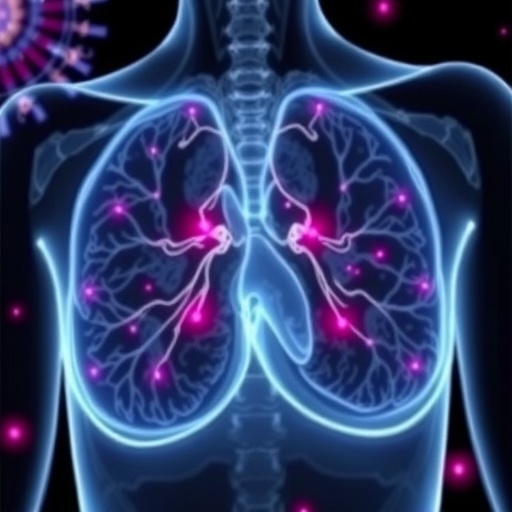Breast cancer remains the most prevalent malignancy afflicting women worldwide, presenting a formidable challenge to oncological therapeutics due to its intrinsic molecular heterogeneity. This complexity obstructs conventional treatment modalities, as therapies efficacious for one subtype may prove ineffectual or deleterious for another. The heterogeneity of breast cancer spans multiple classifications, including Luminal A, HER2-positive, and the highly aggressive triple-negative breast cancer (TNBC), each subtype characterized by distinct genetic and phenotypic signatures. Such diversity demands precision approaches capable of tailoring interventions to the nuanced biology of each tumor.
Traditional treatment regimens struggle not only due to inter-patient variability but also because of drug resistance mechanisms and systemic toxicity, which can severely compromise patient quality of life. These limitations have catalyzed the investigation of nanomedicine—an emerging frontier in oncology that exploits engineered nanoparticles to achieve targeted drug delivery. By harnessing nanoscale materials capable of selectively homing to tumor cells, nanomedicine offers the possibility of maximizing therapeutic efficacy while minimizing off-target effects.
Despite this promise, the rational design of nanocarriers has historically been impeded by a combinatorial explosion of parameters affecting nanoparticle performance. Variables including particle size, surface charge, ligand density for active targeting, and payload release kinetics interact in complex, non-linear ways. This complexity renders traditional trial-and-error experimentation both time-consuming and inefficient, limiting the pace of clinical translation for promising nanotherapeutic candidates.
A novel remedy for this challenge has recently been articulated by researchers from Shanghai Jiao Tong University School of Medicine and Guangdong Medical University. Their comprehensive review introduces the concept of an “AI-multi-omics intelligent delivery paradigm” in which advanced machine learning algorithms integrate multi-dimensional biological data—genomic, proteomic, metabolomic, and beyond—to optimize the physicochemical design of nanocarriers. This approach allows for the prediction of nanoparticle configurations that are optimally tailored to an individual patient’s tumor biology, effectively bridging the gap between bench research and personalized clinical application.
Dr. Meng-Yao Li, corresponding author of the study, emphasizes the paradigm shift this represents: moving away from generalized, one-size-fits-all strategies toward subtype-specific, precision nanomedicine. In their analyses, the authors illustrate that in aggressive Luminal B breast tumors, AI-driven optimization enabled synchronization between drug release profiles and the tumor’s proliferative cycle, achieving a 2.8-fold improvement over static nanocarrier designs. Such targeted temporal correlation maximizes drug efficacy at critical cellular phases.
Further dissecting clinical implications, the review highlights subtype-tailored approaches. For HER2-positive breast cancer, the integration of trastuzumab-conjugated dendrimers notably reduced systemic toxicity by 47%, signifying enhanced targeting specificity and safety. TNBC, notorious for poor prognosis and limited treatment options, benefits substantially from EGFR-antibody-functionalized liposome delivery systems, which increased tumor nanoparticle accumulation by a remarkable factor of 3.2, potentially overcoming barriers of therapeutic resistance.
The review also scrutinizes the current clinical landscape of nanomedicines, spotlighting FDA-approved therapeutics such as Doxil®. This liposomal formulation of doxorubicin exhibits markedly reduced cardiotoxicity, lowering incidence from 18% to 3%, thereby exemplifying how nanotechnology enhances the therapeutic index of established chemotherapeutic agents. The authors further draw attention to emerging therapies under clinical investigation, particularly ²²⁵Ac-liposomes, which have yielded encouraging outcomes in metastatic TNBC, with 77.8% of patients achieving disease stabilization over six months and minimal hematological toxicity.
Yimao Wu, co-first author, extols the transformative promise of these advancements, asserting that intelligent nanomedicine can convert breast cancer from a lethal malignancy into a controllable chronic condition. This vision hinges on leveraging AI and extensive omics profiling to precisely dictate nanocarrier characteristics, thus tailoring treatment to tumor-specific vulnerabilities and circumventing resistance mechanisms.
Nevertheless, the path to clinical realization is tempered by challenges surrounding scalable manufacture and long-term biocompatibility of nanotherapeutics. Addressing these concerns demands continuous innovation in biomimetic strategies, such as employing exosomes as natural nanoparticle vectors, and rigorous safety evaluations during translational studies. The integration of AI-guided design and biomimicry holds promise for surmounting these barriers.
In summary, this seminal review encapsulates a paradigm evolution in breast cancer therapy. By synergizing artificial intelligence, multi-omics datasets, and nanotechnology, it lays a robust framework for developing individualized nanomedicine regimens. This confluence of cutting-edge disciplines heralds a future where therapeutic precision supersedes blanket chemotherapy, potentially revolutionizing patient outcomes globally.
As breast cancer heterogeneity continues to pose significant treatment obstacles, the intelligent design of nanomedicine enabled by machine learning marks a decisive advance in overcoming these multifaceted challenges. The promising clinical data underscore the feasibility of such approaches, establishing a clear trajectory toward their widespread adoption. The convergence of computational tools with nanotechnology thus stands at the frontier of oncology, redefining personalized medicine for one of humanity’s most pervasive cancers.
Subject of Research:
Not applicable
Article Title:
Intelligent delivery and clinical transformation of nanomedicine in breast cancer: from basic research to individualized therapy
News Publication Date:
23-Oct-2025
Web References:
http://dx.doi.org/10.55092/bm20250014
Image Credits:
Yimao Wu/Shanghai Jiao Tong University School of Medicine, Guangdong Medical University, China; Zichang Chen/Guangdong Medical University; Xiaoyan Chen/Guangdong Medical University; Meng-Yao Li/Shanghai Jiao Tong University School of Medicine, Shanghai Jiading District Central Hospital
Keywords:
Nanomedicine
Tags: advancements in oncological therapeuticsAI-powered nanomedicineengineered nanoparticles in cancer therapyminimizing systemic toxicity in treatmentmolecular heterogeneity in breast canceroptimizing nanocarrier designovercoming drug resistance in cancerpersonalized breast cancer treatmentprecision oncology approachestailored interventions for breast cancer subtypestargeted drug delivery systemstriple-negative breast cancer challenges





